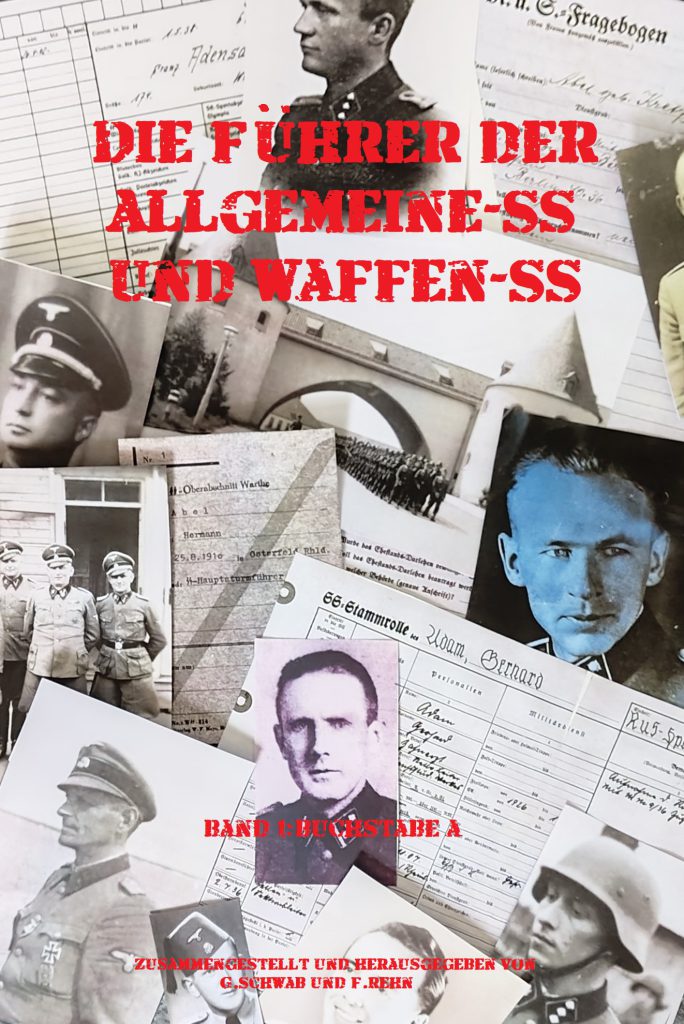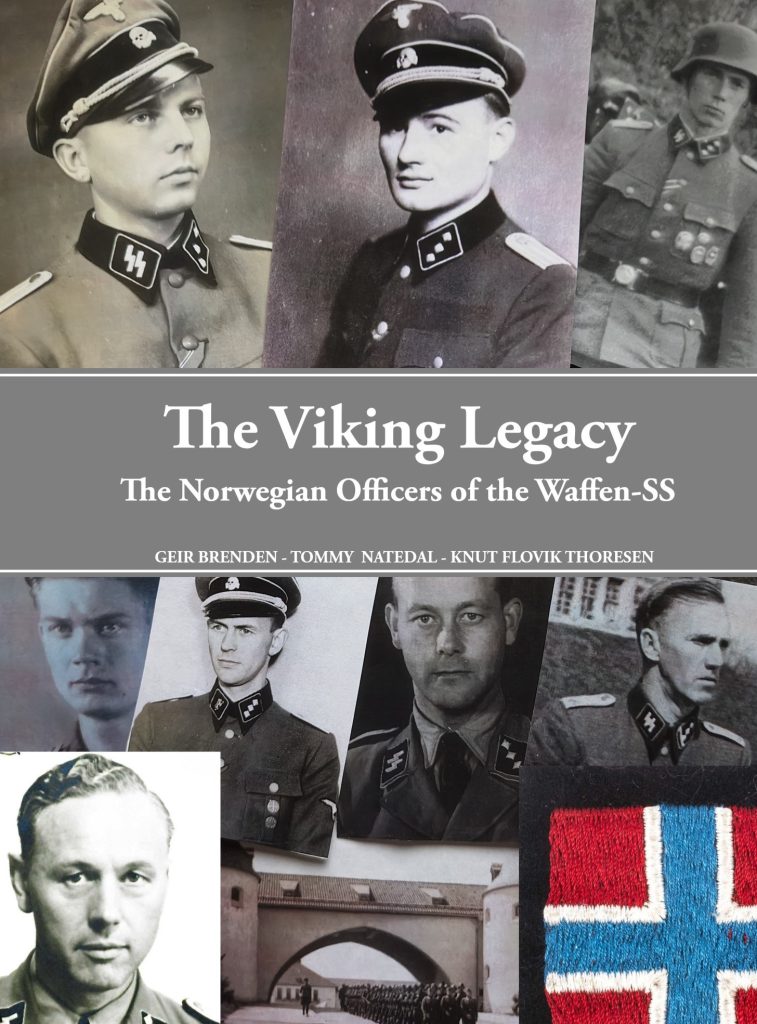How to research an Soldier
I have many times got the question about a Officers, NCO or Privates of the Waffen-SS, sometimes its easy but sometimes it´s hard. As an example if you search a NCO or Private I can from the begining say that it will be very hard to find some info, of course there are exceptions such a with those who got a high award, sich as the Knights Cross, German Cross or close combat in Gold. But if you are searching for “Ernst Baum” the only thing I can say is to got through award lists for the unit he served in. maybe he got an EK II or EK I, there you maybe will find his name, rank, birthday, unit and when he got the award. There is also list for those who go the “Kriegsverdienst Kreuz mit Schwerten II or I class.
If the one you are searching was an officer of the Heer or Waffen-SS there are better chanses for you to get more info. If he got married even better, but that´s for the Officers in the SS/ Waffen-SS. I forgot to mention if you are searching for an NCO or Private of the SS/Waffen-SS there is a good source with the former SS-RuSHA files. All soldiers of the SS who wanted to get married or engaged had to send an application to the SS-RuSHA headquarter.
But how to get the files? Heer files are stored at the Bundesarchive in Freiburg, SS/Waffen-SS files are stored at the Bundesarchive in Berlin Lichterfelde AND the National Archive in the USA. The NARA also have all Heer files as well. As After the war, they got all docs and placed it under US goverment. It wasn´t until the mid 90´s the documents was handed over to the German Goverment. But during the 60´s NARA took photograps of everything and stored them om Microfilm. You can order such microfilm roll from NARA, but you get it over electronical transfer. They are pretty slow and expencive. You really need to know exactly which roll you want when you order it.
Bundesarchive are slitghtly easier to use, you still need name, birthdate and hopefully you know in which town he was born, that´s a good advice when you are looking for people named with Schmidt or Schneider. There is a lot of them.
But before you can order from Bundesarchive you have to fill a form called “benutzerantrag” there you fill all the info about yourself and also what you main subject is. With that “benutzerantrag” you can then order some of the files from Bundesarchive. When I write “some” I mean ordinary SSO files and files from the Bundesarchive in Freiburg.
If you want to order a file from the former SS-RuSHA archive, you also need to fill in a form were you promise and declere that you won´t use the medical info you get from the files. You also promise that you won´t make it public, if you not use similiar such as “A SS officers wife´s father was diagnosed with this or that” that´s OK but you can´t write “SS-Ostuf MAnfred Schmidts wife´s family had a story of mental illness in the family” (this is totally taken out of the blue and it´s not anything I know). If you do it, you can be prosecuted and I am pretty sure you will never get anything from the Bundesarchive again.
You can when everything is OK with the forms order the file over Bundesarchive´s partner “Selke GmBH” they take about 2 months before they can send the file. They won´t send it until they see the money on their account. Beware Selke is pretty expencive and if you want a lot of files count that it will cost you approximately 8-900 Euro. You will get the files on a USB stick.
One other option is to go to Bundesarchive yourself, you need to appoint a time when you will be there, give them two weeks notice so they can arrange that all what you asked for are at the desk. This is actually the best option, and the cheapest. I have been there twice now, and I am planing to go there again in october. a good advice , don´t spend time reading the files there! Copy or print as much as you can and read it when you return back at home. The last time I was there I gad three days at the Barch Lichtefelde in those three days I managed to go through 62 rolls most of the RuSHA files, which you are not allowed to copy digitally, only to print on their printer or order through Selke.
Other docs such as SSO and Heer files you can download to your own account on the computer, and you can then email them to you. And download them when you get back home, they are aviable for 1 month.
Some docs you get the files in original, I got a ton of files from different SS-Junkerschulen in original. Those are you allowed to take photos of with your mobilephone or if you bring a camera.
How to find the files! NARA have indexes of most of the material they have, you can search the internet and you will find the PDF´s with wished material. The SSO ´s are under the Index A3343 SSO RuSHA files are under A3343 RS, no index made of those rolls yet. Enlisted and NCO´s go under the Archive name A3343 EM, those are a pure dispointment don´t bother to orded such rolls. in most cases you get the name and when they enlisted, and maybe the first unit such as SS-Pz.Gr.AuE.Btl 4. Nothing more.
Bundesarchive have a MUCH better search engine. Their Invenio is a true master piece of serch engine. Sign up (it´s free) and then push the “search button” (Suche in german) you will see three options , see picture

In the first option you can write whatever you want, I can´t guarantee you will find anything. I myself uses the “Namensuche” which is the best. See picture
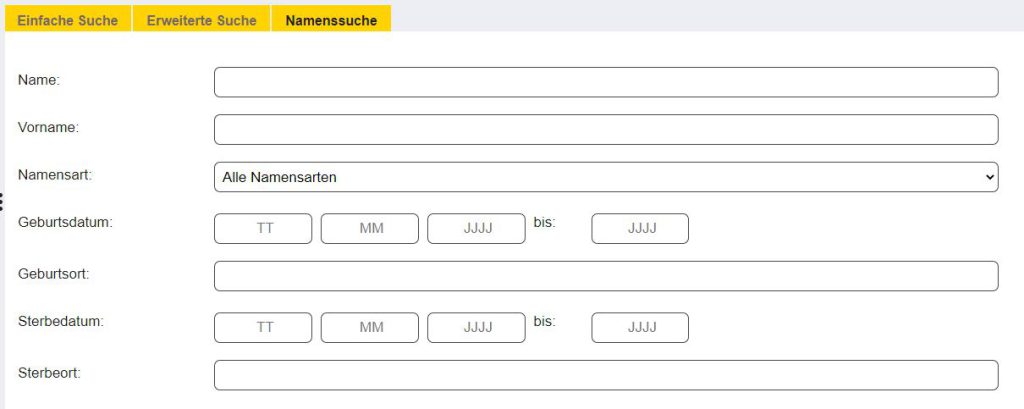
There you write the name of the person you want to find, a birthyear and push “suche” I did for this article a search for Michael Wittmann born 1914. And I got three hits.
First:
- Wittmann, Michael
- Bestandsbezeichnung Sammlung Berlin Document Center (BDC): Personenbezogene Unterlagen der SS und SAGeburtsdatum 22.4.1914Unterlagenart
Sachakte
Alte Signatur VBS 283 / 6065009670
Benutzungsort Berlin-Lichterfelde
Which is his SS-RuSHA file. In this file you will find anything about his family, parents, sieblings and future wife. It probaly hold three photos of him, portrait, from the side, and a photo in full figure. The same with his bride to be. Very useful information about his early years in the SS. What points out that´s his RuSHA file is the “Sachakte”
Second hit is
- Wittmann, Michael
- Bestandsbezeichnung Sammlung Berlin Document Center (BDC): Personenbezogene Unterlagen der SS und SAGeburtsdatum 22.4.1914Unterlagenart
Personalakte
Alte Signatur VBS 286 / 6400050346
Benutzungsort Berlin-Lichterfelde
Here is his SSO file, which indicated with “personalakte” this is what you find in his SSO, promotions, awards, SS-Nr. NSDAP number, if he was married and much more. Most about his Militaryservive. The first page of the SSO file of Wittmann looks like this. (From my archive)
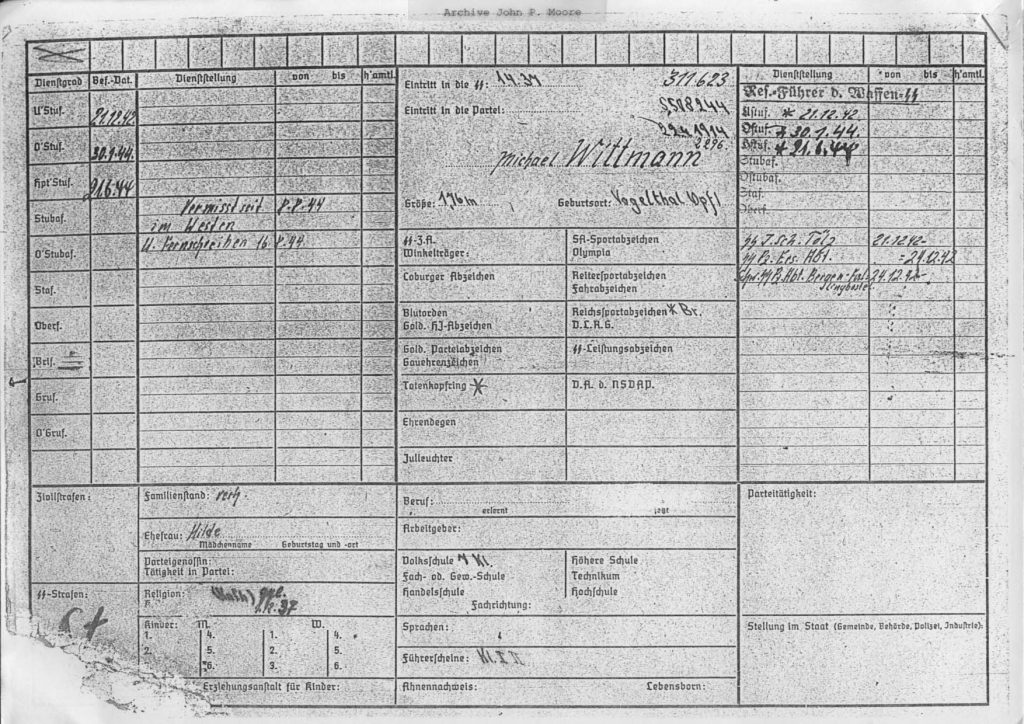
Third hit and the last
Wittmann, Michael
Bestandsbezeichnung Sammlung Berlin Document Center (BDC): Personenbezogene Unterlagen der NSDAP
Geburtsdatum 22.4.1914
Unterlagenart Sachakte
Benutzungsort Berlin-Lichterfelde
Those papers are about him and his membership in the NSDAP. I have tried to look at those files, but there is a mess and very hard to find info on, there is millions of names and the number of rolls are counted in 1000´s
Beside this original document which are a true source of info, I strongly recomend you to buy books, especially if you are looking for more info about Wittmann I strongly advice you to search for books about his unit.
With them and the original docs you can get a really good picture about him as a person and a commander of an Waffen-SS unit.
I also strongly advice you to look at rolls from the serie T354 (Waffen-SS and Allgemeine-SS) which contains info about units. The serie T175 is docs from RFSS and other main offices such as the SS.Führungshauptamt etc. As you can see the most info I can give is about SS officers, that´s why I am researching them. But you will find Heer officers with the simliar serch engine. There are many rolls out there for those who are interested in Heer units or other more obscure units or why not a Army located in Narwa 1944.
One more thing and that´s a true jem , learn to know other people with same interest that you also have. Ask them if they can help you. Offer them what you have. I would have come as long as I have done without the assistance of fellow researcher. We are actually going to have a conferens here in Stockhom next year with die hard researchers of the SS/Waffen-SS, those who will participate are from every country of scandinavia. Its going to be a blast!
Prepare yourself that you till have a ton of docs in the near future. I have been doing this for a few years now, it have costed me thousands of Euros and Dollars, but today I have about 17 Terrabytes of docs, and it grow from one day to the next day
If you have questions and more thoughts why don´t you send me an email on georg68schwab(a)gmail.com
Happy hunting!
/Georg
New vs Old site
Hello,
I see through Analytics that many search for pages that are still on the old page. I will continue to transfer the info today.
But if you are in a hurry and need info fast please visit www.old axishistory.com
Best regards
Georg
Oberstleutnant Max Baeßler (1893-?)
member and forum staff Askropp, writes a lot on the subforum Dieter Zinke Axis Biography . If you are looking for officer why dont take a look. You might find what you are looking for. Below you find almost anything you need about Max Baessler.
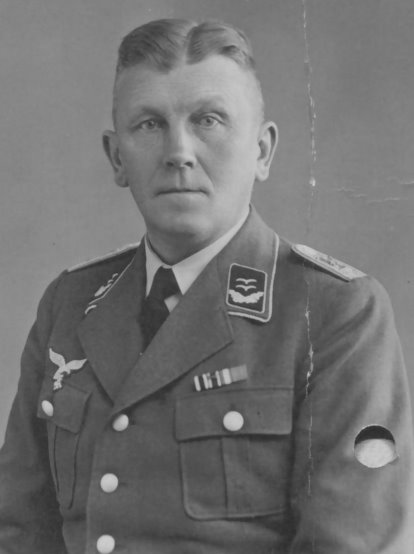
Max Robert Karl Baeßler
* 03.02.1893 Pleische / Niederschlesien
† [?]
Vater: Gustav Baeßler (1863-?), Lehrer
Mutter: Anna Baeßler, geb. Fabich (1869-1936)
30.09.1919 Heirat mit Else Woide (1896-?)
1 Sohn (*1920), 1 Tochter (*1922)
02.10.1911 Kanonier
27.01.1913 Gefreiter
09.09.1914 Unteroffizier
01.04.1917 Sergeant
01.07.1920 Feuerwerker
13.03.1924 Charakter als Leutnant beim Zeugamt
24.03.1937 Oberleutnant (WE) mit RDA vom 01.12.1927
01.03.1938 Hauptmann (WE)
01.11.1940 Major (WE)
10.01.1944 Major (W) mit RDA vom 01.11.1940
01.04.1944 Major mit RDA vom 01.11.1940 (73)
09.11.1944 Oberstleutnant
02.10.1911 Eintritt in die 2. (r) / Feldartillerieregiment 42 (Schweidnitz)
01.10.1913 in der 2. (r) / Feldartillerieregiment 35 (Deutsch Eylau)
08.08.1915 erkrankt, danach Lazarett
05.10.1915 zugeteilt der Ersatzabteilung des Feldartillerieregiments 42
05.12.1915 in der 5. / Feldartillerieregiment 42
13.02.1917 erkrankt, danach Lazarett
01.04.1917 zugeteilt dem Ersatzabteilung des Feldartillerieregiments 42
03.07.1917 beim Artilleriedepot Breslau
15.03.1918 im Stab des Generalkommandos 59
28.05.1918 beim Artilleriedepot Breslau
01.01.1921 in der 14. (r) / Artillerieregiment 3 (Sprottau)
01.11.1921 an der Artillerieschule (Jüterborg)
01.12.1921 beim Zeugamt Berlin-Spandau
02.11.1922 kommandiert zur Inspektion für Waffen und Gerät (bis 30.04.)
30.09.1923 ausgeschieden
1926-1936 Angestellter der Nationalarchiv München Verlags-GmbH
01.07.1931 Eintritt in die NSDAP
24.03.1937 wieder angestellt bei der Luftmunitionsanstalt Lamitsch
01.05.1937 bei der Luftmunitionsanstalt Hesedorf
04.10.1940 stellvertretender Leiter der Luftmunitionsanstalt Rochau
01.02.1941 bei der Luftmunitionsanstalt Krappitz
10.10.1914 EK II
15.02.1921 Schlesischer Adler II. und I. Stufe
15.08.1935 Ehrenkreuz für Frontkämpfer
SS-Ogruf Theodor Eicke
This SS-General if someone tears up opinions, was he a war criminal or a clever organizer with a good side? If you read post-war literature, the veterans seem to have praised him highly. They gave him the epithet “Papa” early on.
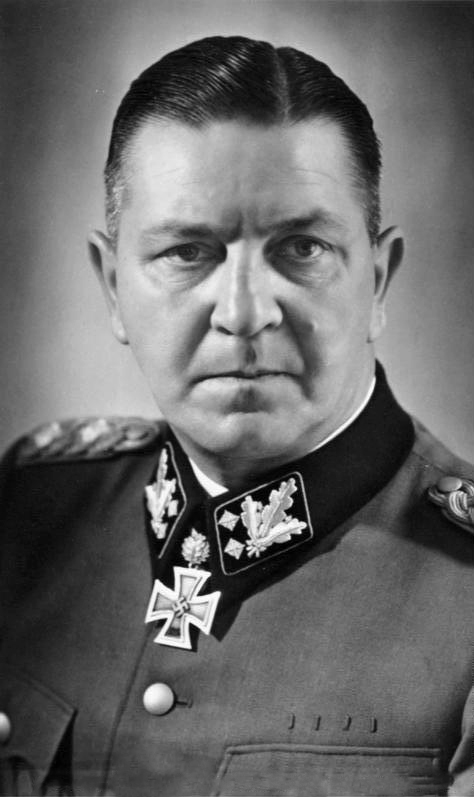
the fact is that he was the one who organized how a German concentration camp was built, why I write in German is that concentration camps were not a German invention, but created by the English during the war in South Africa, the so-called Boer war.
Eicke’s organization meant that a concentration camp had 6 departments, as well as a guard unit in the form of an SS-Totenkopfverbände. Ab I. In was the commandant’s and its adjutant’s department. Abt II, the camp was the “Gestapo”, this was independent of the commandant and other staff. Abt III. Where the camp itself in German was called “Schutzhaftlager” this department had its own commandant who had the title “Schutzhaftlagerführer”. Department IV was the administration and had everything to do with the camp’s economy. Dept. V was the domain of the doctors. They were often also responsible for the troops that were around the camp. Department VI was the political unit responsible for ensuring that the troops at the camp received the right training in National Socialism. The unit that guarded the camp was first called “Wachsturmbann” to later get the title SS-Totenkopfverbände, there were four such units 1, 2, 3 and 4 these four were responsible for guarding the camp. Before the war, the soldiers in the SS-TV units were on a rolling schedule, one week in the towers or around the fence and three weeks of military exercises. During a conversation with a veteran who admitted that he had served in KL Buchenwald between 1938-1940, when asked what it was like to guard the camp, the simple answer was “it was really boring”.
But enough about the camps, after Eicke created this model, in 1936 he was appointed supreme director of the SS-TV and Concentration Camps, his new position meant that he settled just south of KL Sachsenhausen (the villa remains and is today a youth hostel). They also built a large complex in the shape of a T, hence the name “T-Gebäude”, this building also remains, it contains a small museum otherwise the Finance Department of the state of Brandenburg takes possession of the rest of the building.
At the end of the war in 1939, parts of the SS-TV participated in the battles in Poland, mainly 2.SS-TV Brandenburg, were involved and they are said to have committed one of the first war crimes of the war. For Eicke this meant little and he praised all his soldiers. Eicke was a leader who in duty he demanded blind obedience, while in his spare time he was one of his soldiers and there are plenty of pictures of Eicke sitting in the middle of his unit smoking his pipe and saying hello to all his soldiers, which even they could do under the relaxed forms. But pity the one who had the nerve to say hello to his general in the service. Then they quickly risked having to put on the striped clothes and see themselves as prisoners in one of the camps.
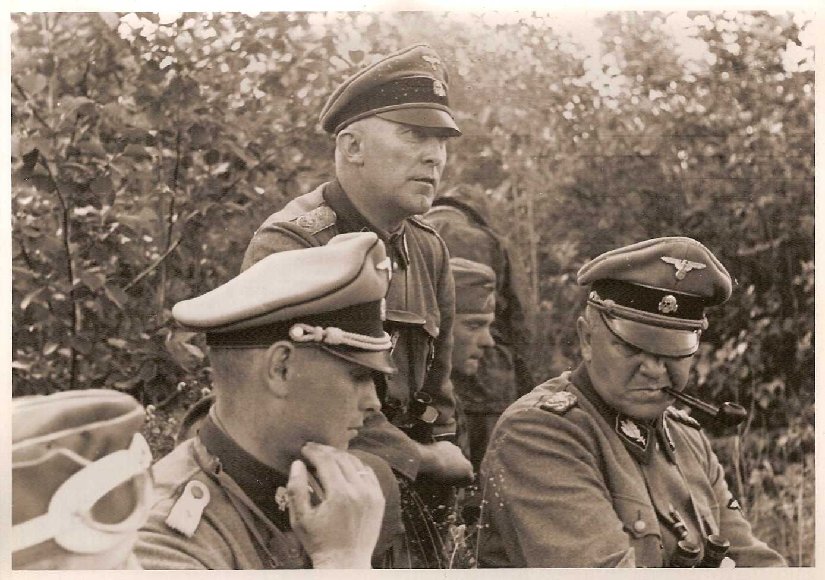
I have documents where soldiers had to leave their post at 1.SS-TV Oberbayern (Dachau) to see themselves transported under guard to KL Buchenwald to see themselves there as prisoners.
Eicke’s leadership was not looked upon kindly by other senior leaders within the SS and the party, he often got into arguments with his superiors and not infrequently RFSS Himmler had to step in, either to reprimand Eicke, but also sometimes to give him the right and with a try to get Eicke to accept that certain things must work in certain ways. This was something of a common thread in Eicke’s life. But still he was admired by his soldiers, both privates and officers.
in October 1939, the SS-Totenkopf Division was formed in Dachau, which had been emptied of prisoners only to accommodate all the new recruits and soldiers. The prisoners were mainly transferred to KL Mauthausen. They began training hard for upcoming battles, and the SS-Totenkopf Division received its baptism of fire in the Battle of France. There, the SS-Totenkopf committed a war crime that echoed far up among the generals of the regular army. What happened was that Fritz Knöchlein executed a unit from the English army at La Paradis, Eicke protected his soldiers and thought it was not so remarkable. But after pressure from both the RFSS and others, Fritz Knöchlein was withdrawn from the front. One might think that this Knöchlein would fall out of favor, but no he was later decorated with the Knight’s Cross and reached the rank of lieutenant colonel in the Waffen-SS (SS-Obersturmbannführer).
After the Battle of France, the SS-Totenkopf Division had a relatively quiet period, being used as garrison troops in France while training under the watchful eye of Eicke.
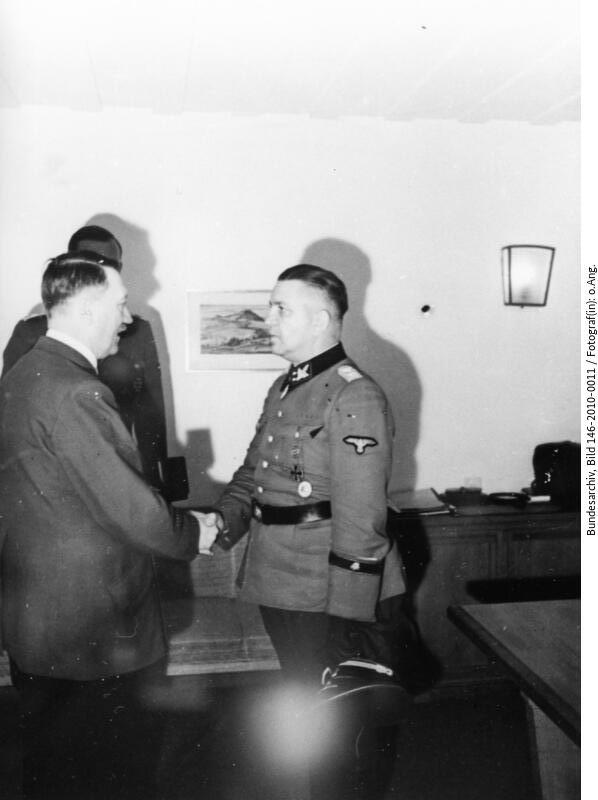
When the Battle of Barbarossa began, the SS-Totenkopf Division was part of the attack and they advanced through Poland (the Russian occupied territories) Lithuania, parts of Latvia towards the great Lake Ilmensee, a lake that would become very associated with the SS-Totenkopf Division and Theodor Eicke.
Even times Eicke was transferred to Hitler’s headquarters, he constantly requested transfers to return to his soldiers who were enclosed in what came to be known as the “Demjansk Pocket”. After eternal nagging from Eicke, who kept sending telegrams to SS-Gruf Simon and others. so he finally got to return to his beloved Division. he regained the lead and immediately launched a mass counterattack against the Russians. Under Eicke’s leadership, many soldiers and officers received high honors in the battles that followed. Fritz Christen who was part of the SS-Totenkopf-Pz.Jg.Abt was the first private to be awarded the Knight’s Cross. But countless others received this high distinction.
Demjansk would also mean that the story of Theodor Eicke would end, during a reconnaissance flight with his Fiesler Storch, his aircraft was shot down by the Russians and all on board died. This happened on February 26, 1943. The soldiers of the SS-Totenkopf Division did not believe it was true and a rescue operation was put in place, if not to recover the bodies. Eicke hated the Russians and letting him fall into the hands of the Russians was completely out of the question for the soldiers of the “SS-Totenkopf”
Theodor Eicke left behind a wife and daughter, his son had died a year earlier as a lieutenant in a Panzer unit. his daughter was also married to SS-Ostubaf Karl Leiner. Eicke’s wife was given permission to continue living in their villa south of KL Sachsenhausen.
If Theodor Eicke would have survived the war, he sure would have been prosecuted and condemed for warcrimes.
The first grave for Theodor Eicke and the two other men who died in the same plane after they was shot down,
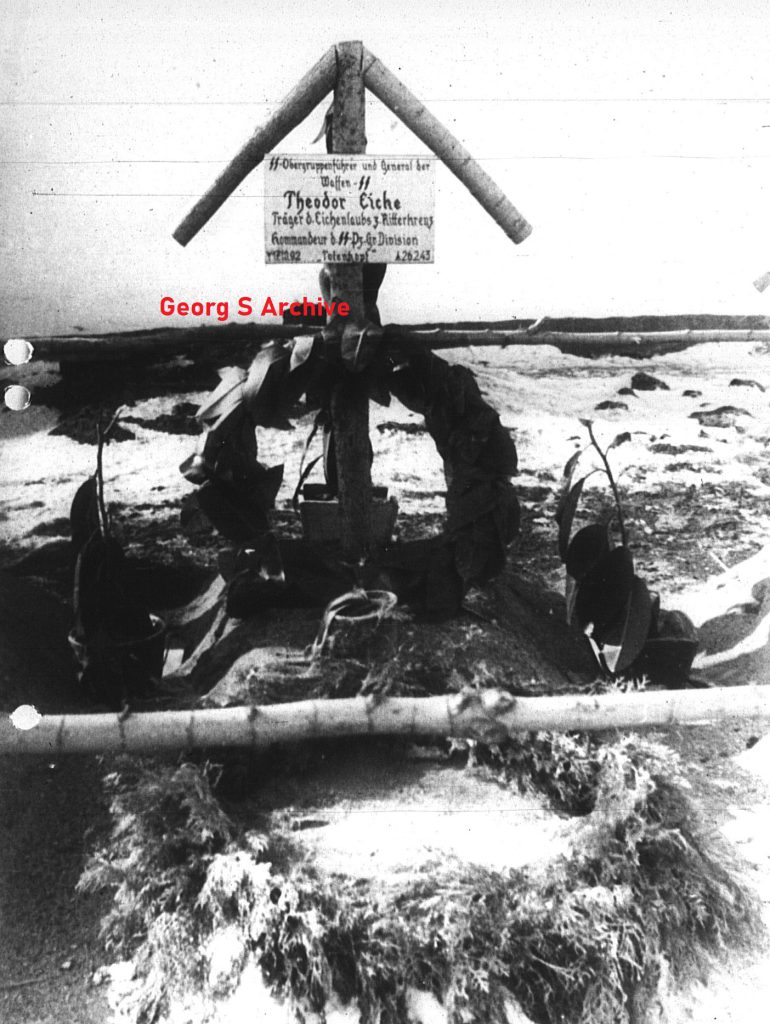
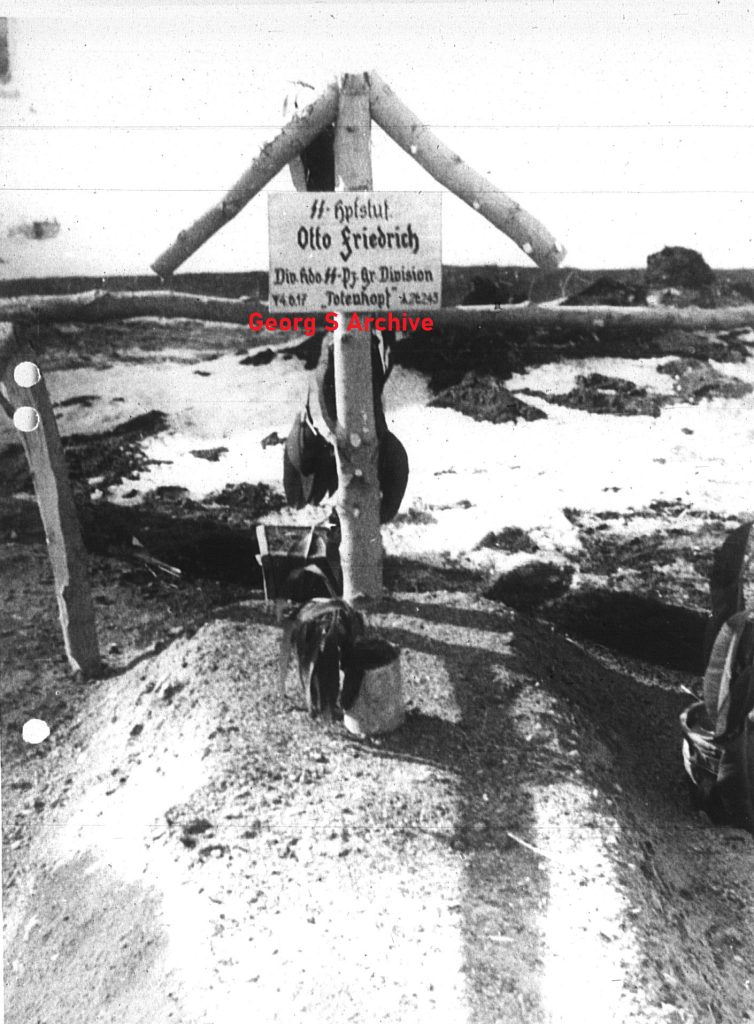
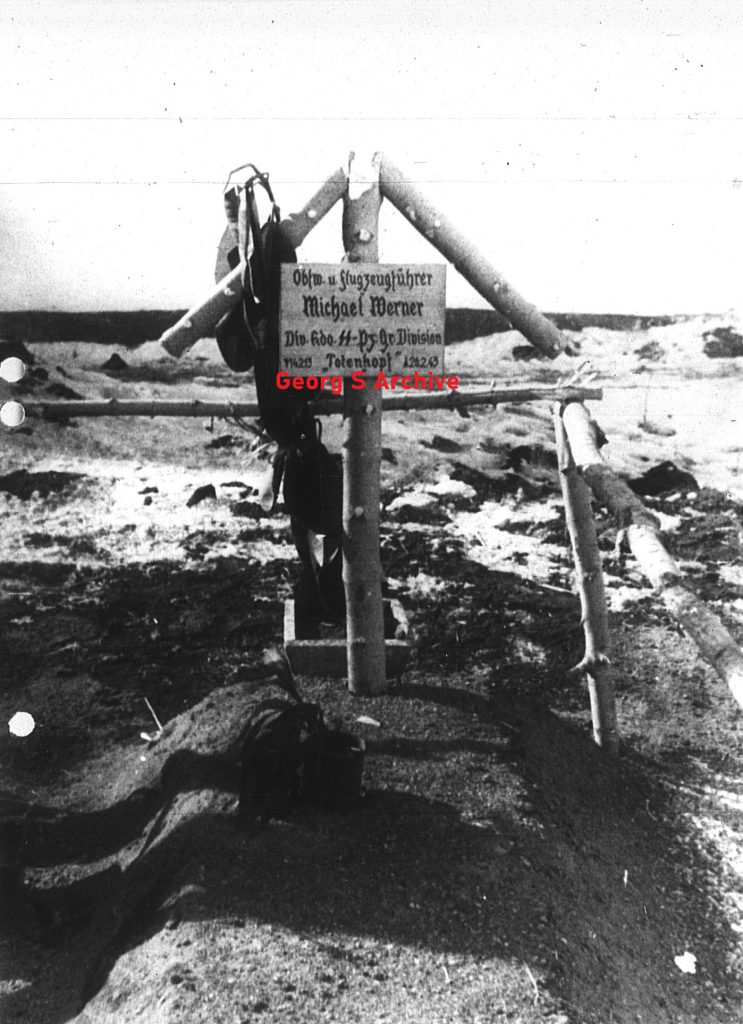
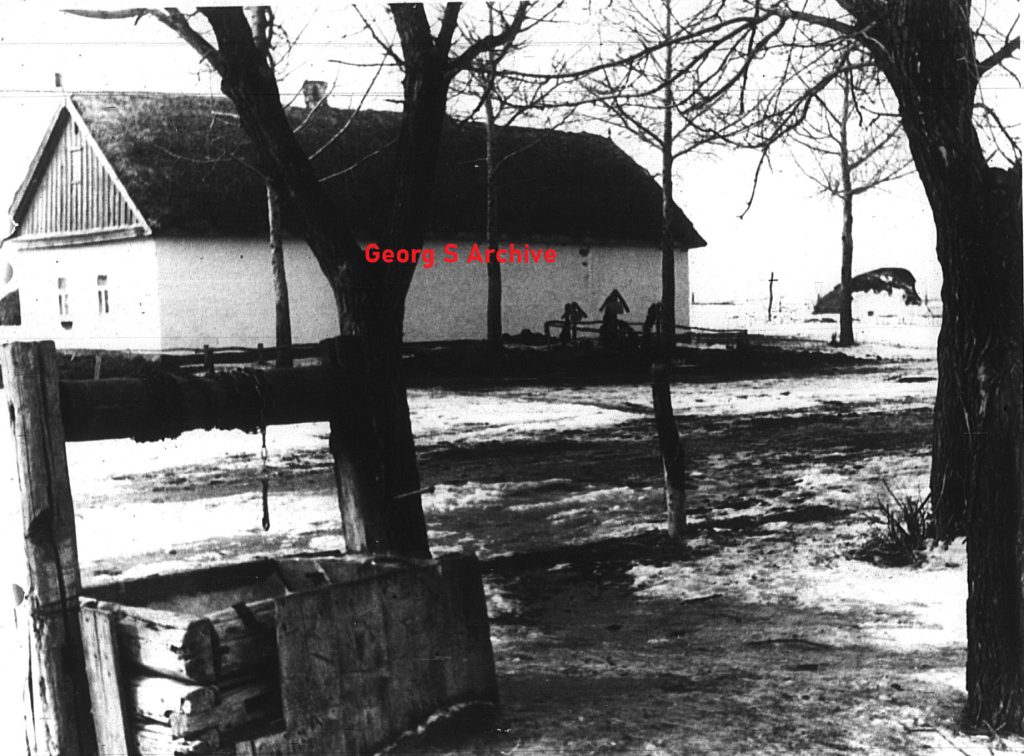
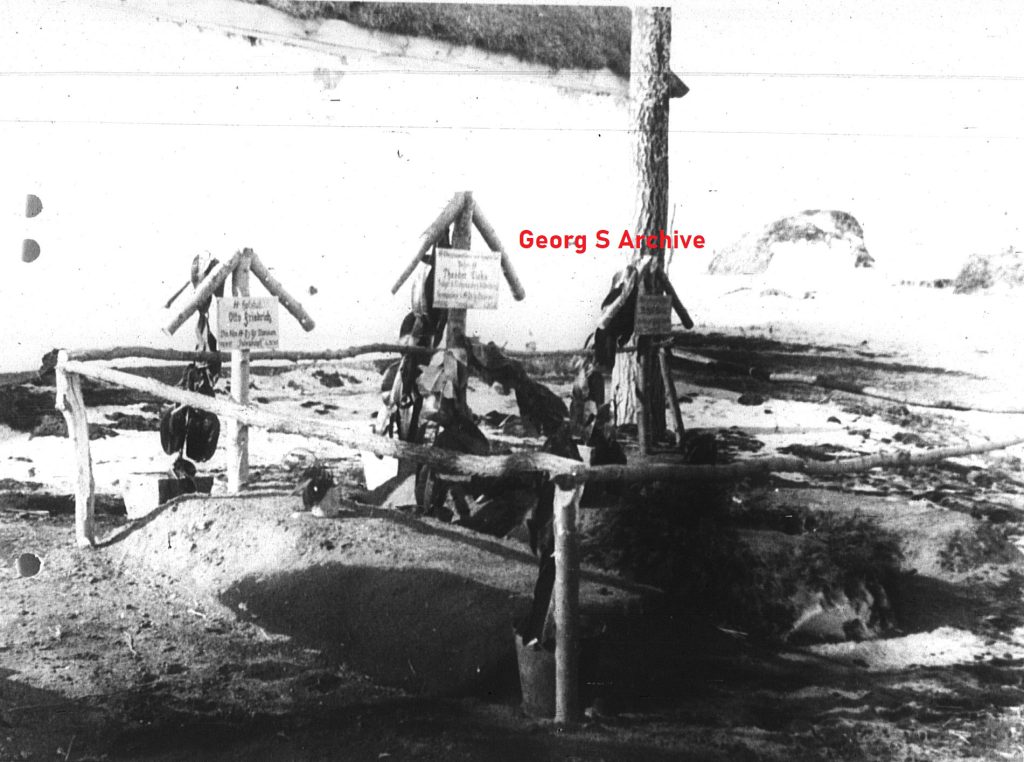
//Georg
Major Günther Rall
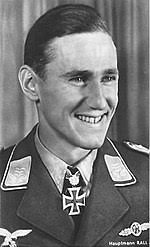
Günther Rall was born in Gaggenau, the German Empire, in March 1918. Rall grew up in the Weimar Republic. In 1933 the Nazi Party seized power and Rall, deciding upon a military career, joined the Army in 1936 to train as an infantry soldier. Rall transferred to the Luftwaffe soon after and he qualified as a fighter pilot in 1938.
In September 1939 World War II began with the German invasion of Poland. Rall was assigned to Jagdgeschwader 52 (JG 52—52nd Fighter Wing) and flew combat patrols in the Phoney War period on the Western Front. Rall flew combat missions in the Battle of France and Battle of Britain, claiming one enemy aircraft destroyed in May 1940. Rall’s wing sustained heavy casualties and the then-22 year old was appointed to Staffelkapitän (squadron leader). He then served in the Balkans Campaign in April and May 1941 without success.
In June 1941, JG 52 moved to the Eastern Front, where it remained from Operation Barbarossa until the end of the war. Rall claimed his first successes in the air defense of Romania. In November 1941, he was shot down, wounded and invalidated from flying for a year. At this time Rall had claimed 36 aerial victories. His achievements earned him the German Cross in Gold in December 1941.
Rall returned in August 1942 and was awarded the Knight’s Cross of the Iron Cross on 3 September 1942 for 65 enemy aircraft shot down. By 22 October Rall had claimed 100 and received the Knight’s Cross with Oak Leaves. He reached 200 in late August 1943. On 12 September 1943 he was awarded the Knight’s Cross of the Iron Cross with Oak Leaves and Swords, the second highest military award in Nazi Germany at the time of the presentation. By the end of 1943 Rall had achieved over 250, the second flier to do so after Walter Nowotny did in October 1943.
In April 1944 Rall left JG 52 and the Eastern Front. He was given command of II. Gruppe (2nd group) of Jagdgeschwader 11 and served in the Defense of the Reich where he was wounded for a third time. In November 1944 Rall was appointed as an instructor and flew captured Allied fighter aircraft in order to prepare instruction notes on their performance to German fighter pilots. Rall ended the war with an unsuccessful stint commanding Jagdgeschwader 300 (JG 300—300th Fighter Wing) near Salzburg, Austria, where he surrendered in May 1945.
During World War II Rall was credited with the destruction of 275 enemy aircraft in 621 combat missions. He was shot down five times and wounded on three occasions.[2] Rall claimed all of his victories in a Messerschmitt Bf 109, though he also flew the Focke-Wulf Fw 190 operationally. All but three of his claims were against Soviet opposition.
Rall joined the West German Air Force in 1956, served as Inspector of the Air Force from 1971 to 1974, and as the German representative to the NATO Military Committee until 1975. After his retirement Rall became a consultant. Among his post-war achievements was the presentation of the Order of Merit of the Federal Republic of Germany. It was awarded to him for his post-1945 service.

